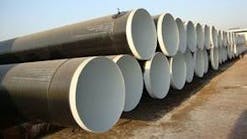Several of my clients recently installed water-cost-reduction valves (sometimes referred to as “smart” valves) in their commercial irrigation and/or potable-water systems. Considering I previously posted about water (“Water Matters!” http://hpac.com/blog/clarks-remarks)—particularly, the water consumed by HVAC systems—and various new/emerging products and technologies, an introduction to these valves seemed appropriate in spite of the fact they are NOT water-conserving devices. They will not qualify for points under recognized green-building rating systems, such as LEED and Green Globes, nor will they likely be eligible for PACE financing, at least here in Florida. They can, according to their manufacturers, however, significantly reduce users’ water bills.
There are several manufacturers of these valves. While design features and materials of construction vary, the principle is the same for all. When inserted into a water line downstream (i.e., on the property side) of a utility water meter, they suppress the water-meter measurement of entrained air in the water stream. Apparently, these valves rely on a back pressure provided by some type of spring-loaded piston, plunger, or diaphragm to compress air bubbles (remember, air is a compressible fluid, while water is not), reducing the air volume being measured by the water meter, for which the consumer is being billed at the water (and, typically, sewage) rate. According to manufacturer literature, the volume of air in water can be 20 percent or higher, and users have reported savings of 8 to 30 percent, with 12 percent appearing typical.
All manufacturers claim their valve can be used in single-jet, multijet, and turbine-type positive-displacement water meters, which account for nearly all of the residential and commercial utility meters in use today. Because tampering with or altering utility water meters generally is prohibited, users cannot vent entrained air in a water-supply line before a meter. This type of valve appears to be the best solution, if the goal simply is to reduce cost. There is one caveat: Because these valves are inserted into supply lines, they cause a small pressure drop, reducing pressure at the point of use. That said, they should not be installed where service pressure already is low (below 35 to 45 psig). In systems with high pressure—above 60 to 65 psig—the pressure drop will be more significant.
If the goal also is to conserve water, do what we ask our clients to do: Commit to using all or part of the savings to implement the water-efficiency measures that require modest capital investment. That actually will reduce water consumption and provide an economic payback. That makes the valve an investment, not an expense.








